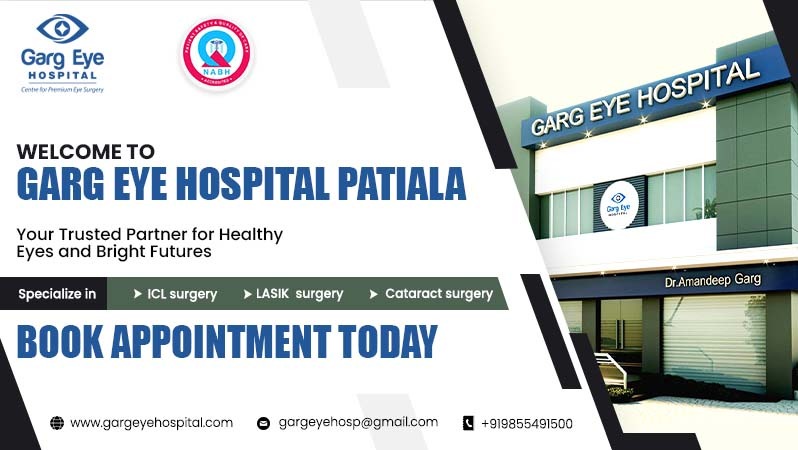Which Is A Better Lens For Cataract Surgery – Monofocal Or Multifocal? – The condition of a patient best describes what treatment is going to suit them the most. Both monofocal and multifocal lenses enhance visions set at different adjustments. People who are considering cataract surgery should address all of their concerns and difficulties before deciding on the treatment. All intraocular lenses possess different functions, therefore, before finding the type of lens that might treat your condition more effectively, you should analyze your duties and activities in daily life by which you can understand your issue better.
Difference between Multifocal and Monofocal lenses
Monofocal lens corrects vision at one distance whereas multifocal lens improves near vision, intermediate vision, and distance vision. Monofocal lenses might require a person to wear glasses after surgery but multifocal lens is said to reduce or prevent the use of glasses after surgery.
Advantages Of Mono-focal Lens
The advantages that a mono-focal lens causes a patient to have if used in cataract surgery are as follows-
- Improved Distance Vision: Monofocal lenses have been proven to correct vision at one focus in a lot of patients very effectively. Doctors and surgeons can determine the accurate focal point for which the treatments need to be performed.
- Budget-friendly: Monofocal IOLs are very affordable and effective compared to multifocal lenses. Multifocal lenses are 10-30 times more costly than monofocal lenses.
- Many people with astigmatism have reportedly achieved better vision with advanced mono-focal lenses. The people having to still wear glasses after surgery have better low-light vision than they would have attained if they chose a multifocal lens.
- Monofocal lenses, once implanted, work very sufficiently for the desired distance without having to provide any maintenance.
- Monofocal lenses reduce the need to wear glasses for distance vision like driving, whereas, a person might still be required to wear glasses for close-up tasks such as reading a book.
Disadvantages Of A Monofocal Lens
- Monofocal lenses provide clarity at either near vision intermediate vision or distance vision. These lenses have a fixed range of focus, therefore, people getting an implant for distance vision might still require reading glasses and people having an implant for near vision will need glasses for distance vision.
- Despite getting an implant, the patient will have to have glasses for a focal point that the lenses do not cover. This increases the patient’s dependency on glasses for other focal points.
- Since the mono-focal lens does not adjust according to different distances, some patients may experience discomfort adapting to constant changes in wearing or removing glasses.
Advantages Of Multifocal Lens
Implantation of the multifocal lens can benefit you in several ways-
- Improves overall vision- Multifocal lens improves all three- near, intermediate, and distance vision simultaneously. Multifocal lenses work best when implanted in both eyes as these lenses can adjust according to different ranges of vision.
- Patients have the feasibility to work on multiple tasks without having to change glasses in between. People having active lifestyles and busy schedules find this option very convenient.
- The multifocal lens helps in reducing the usage of glasses or corrective lenses as it can adjust through different vision altogether.
Disadvantages Of Multifocal Lens
The multifocal lens has multiple functions and can provide better vision at all ranges, however, it also has some disadvantages:
- A few patients have reported experiencing halo or glare looking at lights in the nighttime with a multifocal lens.
- Multifocal IOLs have also caused some patients to suffer contrast sensitivity when reading under a dim light.
- Multifocal lenses are far more expensive respective to their complex designs than monofocal lenses.
Table Showing Difference Between Monofocal Lenses & Multifocal Lenses
| Feature | Monofocal Lenses | Multifocal Lenses |
| Vision Correction | Provides clear vision at one distance (usually set for distance vision). Glasses needed for other distances. |
Designed to correct vision at multiple distances (near, intermediate, and far), Reduces dependency on glasses.
|
| Cost | Generally less expensive than multifocal lenses. | More expensive due to advanced technology. |
| Suitability | Ideal for patients who don’t mind wearing glasses after surgery. |
Best for patients who prefer to be glasses-free as much as possible.
|
| Post-surgery Adjustments | Easier adaptation post-surgery as the visual experience is more akin to natural seeing with glasses. |
May require a period of adjustment as the brain adapts to interpreting different focal zones.
|
| Night Vision | Typically better night vision with less risk of halos and glare. |
Some patients may experience halos and glare, especially in low-light conditions.
|
| Visual Clarity | High level of clarity at the chosen focus distance. |
High level of clarity across various distances, though some find that the vision isn’t as sharp as with monofocal.
|
| Lifestyle Compatibility | Good for those with a simple or active lifestyle who do not mind using glasses for near tasks. |
Highly beneficial for those who require clear vision at multiple distances and have more complex visual needs.
|
Conclusion
To conclude, a person suffering from impaired eye vision should be accurately examined to recognize the issue which will clear all doubts about the type of lens they should choose. Which is better for your eyes, is your end choice. Garg Eye Hospital is here to assist you 24×7 to get the right desired results.



